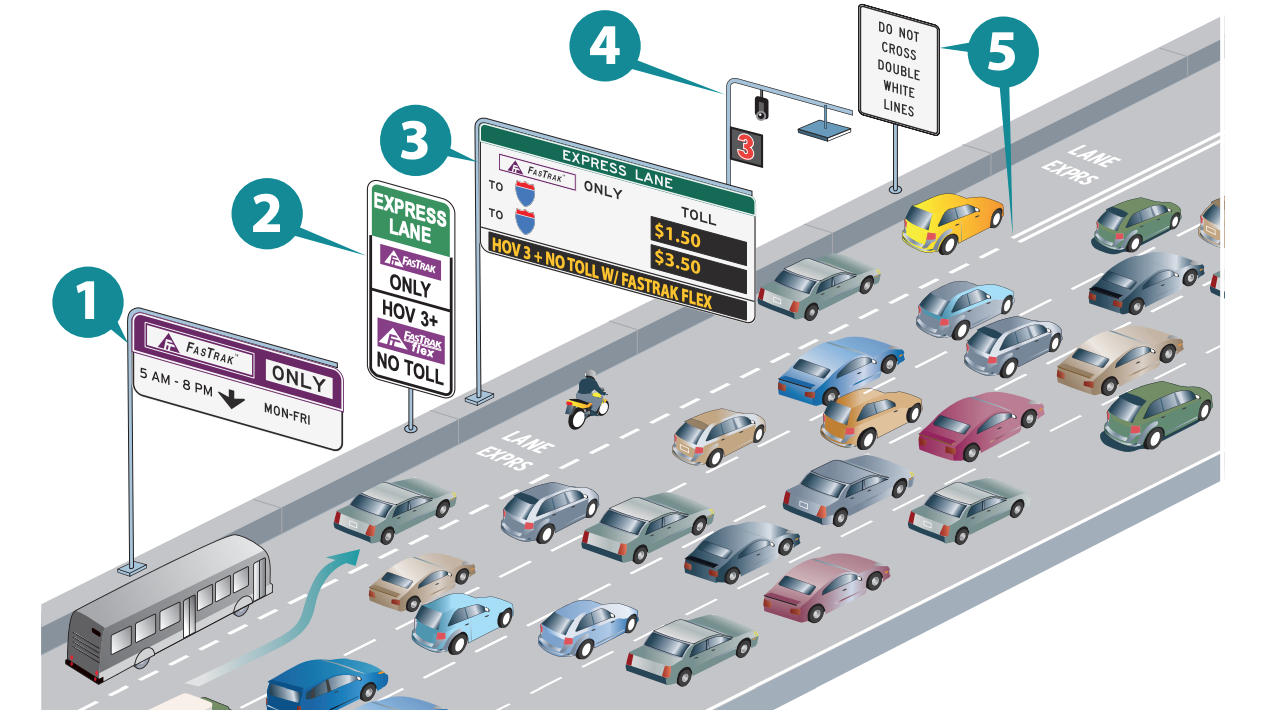Note: GJEL Accident Attorneys regularly sponsors coverage on Streetsblog San Francisco and Streetsblog California. Unless noted in the story, GJEL Accident Attorneys is not consulted for the content or editorial direction of the sponsored content.
Back in 2015, the The Metropolitan Transportation Commission (MTC) and Bay Area Infrastructure Financing Authority (BAIFA) agreed on a plan to bring new High Occupancy/Toll Lanes to Silicon Valley. The I-880 Express Lanes Project (fact sheet here) extends for 25 miles (going south) and 20 miles (going north) in the stretch of freeway between Oakland and San Jose. Construction is well underway, and the lanes are expected to open in the late summer of 2020.
But there are still a few t's to be crossed and i's to be dotted and the MTC and BAIFA are looking for your help. Comments are due tomorrow and can be emailed to info@bayareametro.gov on a number of issues. A full list of what is still being decided can be found in the bullet points below. If you are unfamiliar with how HOT Lanes and Express Lanes work, the paragraphs that follow explain how congestion pricing can work.
MTC and BAIFA are proposing the following rules for the toll lanes. If approved, these rules will also go into place for the Express Lanes on the 680 as well:
- A 50 cent minimum toll in the area
- No maximum toll
- Toll reductions based on ridership: half-priced tolls for HOV2
- Toll removal for 3+ person carpools, vanpools, motorcycles and buses
- Toll reductions based on emissions: eligible clean air vehicles pay half price
- A requirement that any car using the lanes have a FasTrack. Cars seeking an HOV discount would have to set their transponder to how many people are in the car. Cars using a discount based on emissions could have one that does not require adjustment.
The I-880 Express Lanes project is one of many projects that seek to bring a network of connected congestion-free lanes to the bay area by 2035. The basic concept of congestion pricing is that by charging drivers a fee based on the amount of congestion in an area (i.e. it costs more to access the lane during rush hour than at 5 in the morning) planners can always guarantee a congestion-free trip for a certain price.
Supporters of congestion pricing argue that it demonstrates just part of the true cost of travel and illustrates the subsidy that car drivers benefit from every day. Opponents decry that the lanes create two classes of drivers, those with money that don't mind paying more for a congestion-free ride and those that can't afford it. Whether or not an HOT/Express Lanes project can be considered equitable depends on how the monies are spent. If they are used to increase and improve transit services for those with the least income, they are generally viewed more favorably by advocates for the disadvantaged than if they go to a general fund or a less progressive project list.
While local media were aghast at not setting an upper limit on tolls, "Hang onto you budget" (sic) warns the Fremont Patch, there is plenty of research that shows that in America we don't charge drivers enough to pay for our driving-centric transportation system. A 2013 study by the American Tax Foundation shows that the American driver pays just over half of the costs incurred by his choice to drive.
And even this City Lab article that begs advocates to not demonize cars and car drivers notes that people overuse their cars and underpay into the transportation system that supports them. The answer to reduce the amount of driving that people do is to incentivize them to make different choices.
After growing steadily for decades, vehicle miles traveled per person peaked and declined after 2005 (as gas prices shot up). This produced knock-on changes in housing markets, and helped accelerate the move back to cities. And the decline in gas prices since 2014 has triggered more driving. “This shows that more intentional kinds of pricing schemes, like congestion pricing or parking pricing, could have similar effects.”
Having a greater benefit for HOV3+ cars over two person carpools (or a parent driving their kid somewhere) may seem strange to Californians who are used to HOV2 being considered high occupancy, but this is standard practice on the east coast. Toll lanes along the congested highways surrounding New York City and Washington, D.C. have offered no subsidy to HOV2 vehicles since their inception. More recently, in 2016, the Express Lanes in Colorado ended their subsidy of HOV2.
The reason to end and reduce this subsidy is simple: the more cars that are allowed to access Express Lanes for free, the less the benefit for cars that feature more riders or are emissions free. By its own admission, the current I-880 HOV Lanes are overcrowded and unreliable. Statistics produced by the MTC show that speeds along the HOV Lanes are less than 45 miles per hour along 90 percent of the corridor at the busiest hours.
The other discounts, if approved by the MTC Board of Commissioners, would be for emission-free and emission-reduced vehicles. Whether or not to include discounts or waived fees for these vehicles has been debated by urban planners for decades. The argument for these discounts/waivers is basically that these cars are less damaging to the environment and their purchase should be encouraged. The counter-argument is that there have been no studies that show a correlation between these toll subsidies and people's car-buying decisions, just anecdotal evidence. The City of Los Angeles ended free parking for emission free cars over a decade ago for this reason.
If you have thoughts on these recommendations, again, comments are due tomorrow and can be emailed to info@bayareametro.gov. Final recommendations from the MTC and a vote by the MTC Board are expected early in 2020.





